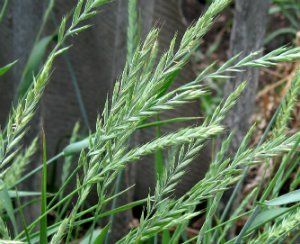Description: Couch Wheatgrass, scientifically known as Elytrigia repens, is a perennial grass species belonging to the Poaceae family. Also commonly referred to as Dog Grass, this plant is known for its creeping rhizomes and ability to form dense, persistent mats. While it has some forage value for livestock, Couch Wheatgrass is often considered a weed due to its invasive nature in lawns, gardens, and agricultural fields.
Habitat and Distribution: Couch Wheatgrass is highly adaptable and can thrive in a variety of environments, including lawns, meadows, and disturbed areas. Native to Europe and Asia, it has been introduced and naturalized in many parts of North America and other regions. The plant spreads aggressively through its rhizomes, making it challenging to control.
Physical Features:
- Stems and Leaves: Couch Wheatgrass produces slender stems that can reach varying heights, depending on the conditions. The leaves are narrow, elongated, and typically have a bluish-green hue.
- Rhizomes: The creeping rhizomes of Couch Wheatgrass are a key feature, allowing the plant to spread horizontally and establish new shoots at nodes along the rhizomes.
- Flowers: The flowering spikes are inconspicuous, and the plant primarily reproduces through rhizomes and seeds.
Ecological Impact:
Couch Wheatgrass can have both negative and positive ecological impacts:
- Erosion Control: The dense mat-forming habit of Couch Wheatgrass can contribute to soil stabilization and erosion control.
- Invasive Nature: Its aggressive spreading through rhizomes can lead to the displacement of native vegetation and a reduction in biodiversity.
Concerns and Challenges:
- Invasive Growth: Couch Wheatgrass is known for its aggressive and invasive growth, quickly forming thick mats that outcompete other plants.
Control and Management:
Cultural Practices:
- Regular Mowing: Frequent mowing can help control the height of Couch Wheatgrass and prevent the formation of seed heads. Mowing alone may not eliminate the plant but can reduce its vigor.
- Healthy Lawn Practices: Promoting a healthy lawn through proper watering, fertilization, and aeration can create conditions less favorable for Couch Wheatgrass.
Mechanical Control:
- Hand Pulling: While labor-intensive, hand pulling can be effective for small infestations. It's crucial to remove as much of the rhizomes as possible to prevent regrowth.
Cultivation Practices:
- Deep Cultivation: In agricultural settings, deep cultivation can help disrupt the rhizomes and reduce the spread of Couch Wheatgrass. However, this method requires caution to avoid soil disturbance.
Herbicides:
- Selective Herbicides: Applying selective herbicides labeled for grassy weed control can be an option for managing Couch Wheatgrass in lawns or gardens. Carefully follow application instructions.
Preventing Spread:
- Early Detection: Regularly inspecting lawns, gardens, and cultivated areas for signs of Couch Wheatgrass is crucial for early detection. Prompt removal or control measures can prevent its spread.
- Minimizing Soil Disturbance: Minimizing soil disturbance during gardening or landscaping activities can help reduce the germination of Couch Wheatgrass seeds and prevent the spread of rhizomes.
- Barrier Installation: Installing barriers, such as edging or root barriers, can help contain the spread of Couch Wheatgrass by restricting the growth of rhizomes.
In conclusion, managing Couch Wheatgrass, especially in settings where its invasive nature is undesirable, requires a combination of cultural practices, mechanical control, and, if necessary, the use of selective herbicides. Early detection and proactive measures are essential to prevent the aggressive spread of this grass species and maintain the desired vegetation in lawns, gardens, and agricultural areas.



